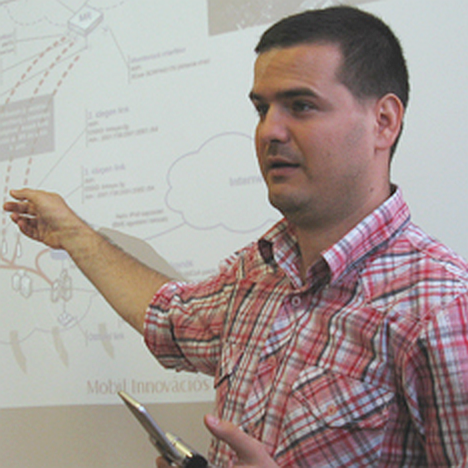Biography
László Bokor graduated in 2004 with M.Sc. degree in computer engineering from the Budapest University of Technology and Economics (BME) at the Department of Telecommunicatons. In 2006 he got an M.Sc.+ degree in bank informatics from the same university’s Faculty of Economic and Social Sciences. He received his Ph.D. degree from the BME Doctoral School of Informatics. Currently he is with the Department of Networked Systems and Services as assistant professor, member of the IEEE and HTE, member of Multimedia Networks and Services Laboratory (MEDIANETS) and Mobile Innovation Centre Hungary (MIK) where he participates in researches of wireless protocols and works on projects related to advanced mobile communication technologies. His research interests include IPv6 mobility, SDN/NFV-based mobile networks, mobile broadband architectures, network performance analyzing, network simulation, heterogeneous future mobile networks, mobile healthcare infrastructures and mobile communication in cooperative intelligent transportation systems. He is an author of several referred papers in international scientific journals and conferences.
Birds of a Feather session title: An emerging platform for mobile health applications: connected cars and V2X communication
Birds of a Feather scope: Automobile manufacturers are intensively working on mobile healthcare applications for cars. Ideas vary from in-vehicle health monitoring, through medical-test ordering and records access while on the move, to prescription ordering, appointment check-ins and any kind of mobile medical multimedia transmission between the car and medical personnel or hospital. There are prototype seats and accessories that monitor the driver’s/passenger’s heart rate, blood pressure, glucose level etc. and can tell if the driver/passenger is drowsy, stressed, their blood sugar is dropping or having any other medical problem. Such systems are able to provide connectivity between the car’s computer and personal medical devices, and can initiate actions or prompt drivers to response before physical indications (i.e., the threatening safety issues) like faintness set in. In case of an accident the emergency response team/ambulance could be informed from the distance about the health status of the injured. All of the above could strongly rely on periodical synchronization with an online personal health record and allow doctors and/or any authorized people to have access to such reports. Some of the possible applications would require direct and real-time mobile medical multimedia connection in different relations like vehicle-to-vehicle or vehicle-to-infrastructure. Here comes the field of Intelligent Transport Systems (ITS) into the picture thanks to the rapid evolution of Information and Communication Technologies (ICT) within the transportation industry. Benefits of ITS are further enhanced when entities continuously communicate with each other and exchange information using Cooperative ITS (C-ITS) techniques. C-ITS gives scope for vehicle-to-anything (V2X) communication techniques and provides a promising platform for mobile healthcare.
The main goal of this birds of a feather session is to bring the above topic to the attention of the eHealth360° Summit with initial questions like
-what kind of mHealth applications and services are of interest in this context?
-what kind of medical sensor and feedback data are of interest to collect/aggregate within the car?
-what are the interesting and relevant communication scenarios for medical V2X?
-how medical personnel could access the date transmitted by V2X technologies?

